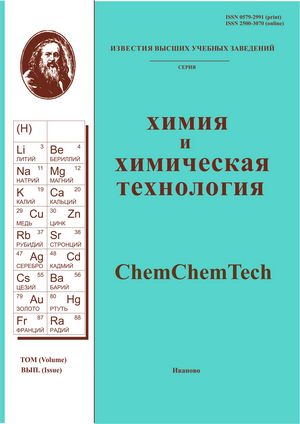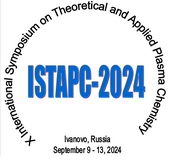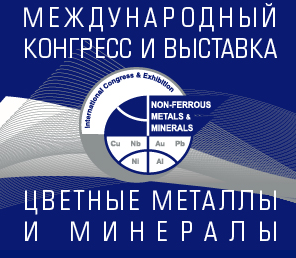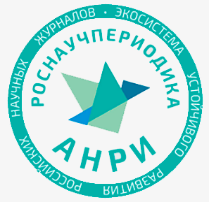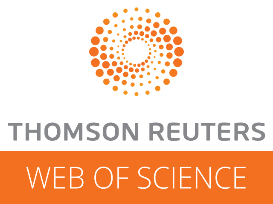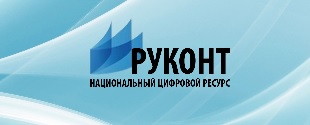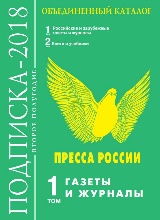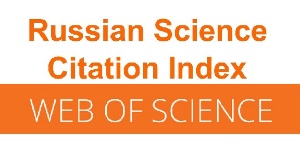МАРКЕРНЫЕ ПОКАЗАТЕЛИ КАЧЕСТВА ДЛЯ ВОДЫ ИЗ ВОДОМАТОВ И РОДНИКОВ
Аннотация
Известно, что качество питьевой воды оказывает сильное влияние на здоровье современного человека. Во многом это зависит от химического и микробиологического состава потребляемой воды. В настоящее время нет установленного перечня маркерных показателей, позволяющего в минимальные сроки сделать выводы о безопасности питьевой воды из целого ряда различных источников. В работе представлены результаты проведенных химического и микробиологического анализа проб воды из вендинговых аппаратов различных торговых марок и родников, расположенных в г. Иваново и Ивановской области. Результаты показывают несоответствие данных типов вод установленным нормам за рассматриваемый период исследования. В ходе выявления маркерных веществ по полученным данным были проведены регрессионный и корреляционные анализы, характеризующие химический состав воды из предложенных источников. Обработка полученных зависимостей содержания конкретного загрязняющего вещества от времени для родников проводилась полиномами 8-го и 9-го порядков, а для вендинговых аппаратов – полиномами 3-го и 4-го порядков, также были получены уравнения трендов для данных зависимостей. Сделаны выводы о возможности использования рассматриваемых методов статистической обработки, определено наличие или отсутствие стохастической связи между всеми анализируемыми компонентами, представлен список показателей, между которыми возможно проследить взаимозависимость содержания в рассматриваемых типах вод. Приведен перечень химических веществ, которые можно считать маркерными показателями для воды из водоматов и родников, а также указаны максимально допустимые концентрации предложенных веществ.
Для цитирования:
Цветков А.С., Буймова С.А., Бубнов А.Г. Маркерные показатели качества для воды из водоматов и родников. Изв. вузов. Химия и хим. технология. 2024. Т. 67. Вып. 12. С. 113-122. DOI: 10.6060/ivkkt.20246712.7059.
Литература
Pokhil Yu.N., Pupyrev E.I., Bagaev Yu.G. Best available technologies in municipal wastewater treatment. Vo-dooch. Vodopodg. Vodosnab. 2011. V. 44. N 8. P. 4-8 (in Russian).
Parilova O.F., Ustimova I.G. Ultrafiltration in water treatment: technical, technological and economic ad-vantages and disadvantages. NDT Мodosnab. Vodootv. 2016. N 1. P. 32-39 (in Russian).
Ulyanov N.B., Volosova A.S. Assessment of best available technologies in water treatment systems. Material confer. Nizkotemp. I pishev. technol. XII v.. V. 2. SPb.: St. Petersburg National Research University of Information Technologies, Mechanics and Optics. 2015. P. 371-373 (in Russian).
Khodyashev M.B., Varyukhina S.A., Kaseleva N.P. On the issue of choosing marker indicators in wastewater from various sectors of the national economy. Astrakhan. Vestn. Ekolog. Obrazov. 2023. V. 78. N 6. P. 18-26 (in Russian). DOI: 10.36698/2304-5957-2023-6-18-26.
Guseva T.V., Molchanova Ya.P., Mironov A.V. Selection of marker indicators for analyzing the environmental performance of enterprises and assessing the condition of natural water bodies using the example of the river basin. Pry. Region. Ekolog. 2015. V. 42. N 7. P. 63-70 (in Russian).
Dikanskaya O.P., Volosatova E.F., Tikhonova I.O. On the issue of marker substances in wastewater from mineral fertilizer production. Usp. Khim. Khim. Tekhnol. 2019. V. 33. N 5. P. 81-82 (in Russian).
Zaraisko I.V., Tikhonova I.O., Koldaeva I.L., Nikitchenko T.V., Kusleeva I.A., Guseva T.V., Ezhova O.S. On the issue of choosing marker parameters and technological indicators for enterprises mining iron ore and enterprises producing products for the further processing of ferrous metals. NDT. Determination of marker substances in various branches of industry. Collection of Articles 8. M.: «Pero». 2017. P. 4-32 (in Russian).
GOST R 56828.15-2016. “The best available technology. Terms and definitions" dated 01/07/2017 No. 56828.15-2016. Official publication. M.: Standardinform. 2019. (in Russian).
GOSTR 70722-2023. “Water quality. List of marker substances and technological indicators for discharges of pollutants during fuel combustion at large installations for energy production" dated 04/12/2023 N. 70722-2023. Official publication. M.: Russian Institute of Standardization. 2023. (in Russian).
GOST R 59024-2020. "Water. General requirements for sampling” dated September 10, 2022 N. 640-st. Official publication. M.: Federal Agency for Technical Regulation and Metrology. 2020. (in Russian).
GOST 21942-2012. Water. Sampling for microbiological analysis. M.: Standardinform. 2019. P. 2-5 (in Russian).
SanPiN 2.1.3685-21. “Hygienic standards and require-ments for ensuring the safety and (or) harmlessness of environmental factors for humans” dated 03/01/2021 N. 2.1.3685-21. Official publication. Approved by the Chief State Sanitary Doctor of the Russian Federation on January 28, 2021. (in Russian).
MUK 4.2.1018-01 “Sanitary and microbiological analysis of drinking water (with Amendments No. 1, 2)” dated 02/09/2001 No. 4.2.1018-01. Official publication of the Federal Center for State Sanitary and Epidemiological Surveillance of the Ministry of Health of Russia. Mos-cow. 2001. as amended and additional in ed. dated 07/01/2001. (in Russian).
SanPiN 2.1.4.1074-01 “Drinking water. Hygienic requirements for water quality of centralized drinking water supply systems. Quality control": official publication: approved by the chief state sanitary doctor of the Russian Federation on September 26, 2001: introduced on Janu-ary 1. 2002. Moscow. 2001. 59 p. (in Russian).
Suslov M.I., Bulkina K.A., Bubnov A.G., Buimova S.A., Tsarev Yu.V. Statistical methods of analysis in environ-mental monitoring of spring waters. Sovr. Naykoemk. Tekhnol. Region. Pril. 2016. V. 45. N 1. P. 107-115 (in Russian).
Kulentsan A.L., Marchuk N.A. Human impact of pollutants in Moscow. ChemChemTech [Izv. Vyssh. Uchebn. Zaved. Khim. Khim. Tekhnol.]. 2022. V. 65. N 9. P. 129-137. DOI: 10.6060/ivkkt.20226509.6619.
Moskalyuk Е.А., Kostogorov N.М., Bogolitsyn K.G., Shulginа Е.V., Pochtovalova A.S. Analysis of the rela-tionship of generalized indicators of wastewater quality of the CBP. ChemChemTech [Izv. Vyssh. Uchebn. Zaved. Khim. Khim. Tekhnol.]. 2022. V. 65. N 4. P. 108-116. DOI: 10.6060/ivkkt.20226504.6524.
Abaeva E.A., Averina Yu.M. Mathematical modeling of the rate of oxidation of iron ions in water. Usp. Khim. Khim. Tekhnol. 2021. V. 35. N 3. P. 12-14.
Guseinova A.M. Study of the effects of iron on the hu-man body in the process of life. Proc. VII Interregional scientificpractical. conf. with international. part. Life safety: science, education, practice. Yuzhno-Sakhalinsk: Sakhalin. Gos. Univ. 2017. P. 149-151 (in Russian).
Lapenko V.V., Bikbulatova L.N., Ternikova E.M. Ecological and physiological assessment of the chemical composition of tap water of the cities of Khanty-Mansiysk and Salekhard. Ul’yan. Med.-Biol. Zhurn. 2020. V. 3. P. 159-167 (in Russian). DOI: 10.34014/2227-1848-2020-3-159-167.
Medvedeva V.M., Pirogov E.N., Semenovykh V.A. Oxidative methods in water treatment. Nauk. Tekhnol. Transport. 2014. V. 4. P. 102-107 (in Russian).
Vodyanitsky Yu.N., Mineev V.G. Degradation of nitrates with the participation of Fe (II) and Fe (0) in soil and groundwater (literature review). Pochvoved. 2015. N 2. P. 156-165 (in Russian). DOI: 10.1134/S1064229315020131.
Milyukov A.V., Matyukhova E.A., Savichevskaya K.V. The influence of a number of chemical elements in drink-ing water on human health. Collected scientific works on materials of the International scientific and practical conference. Problems of method. natural and technical sciences: modern const. Belgorod: LLC "Agency for Ad-vanced Scientific Research". 2019. P. 64-69 (in Russian).
Videnichkin D.M., Frolov V.K. On the influence of drinking water quality on the formation of public health. Collection of articles of the XIV International scientific research competition Best student article 2018. Penza: Nauka i obrazovanie. 2018. P. 219-221 (in Russian).
Magomedov M.G., Omarova S.O., Abdurazakova Kh.N. The influence of the concentration of Zn, Cu, Mn, Mg in natural drinking waters on the incidence of pulmo-nary tuberculosis in the population of the Dagestan plain. Material of X Republican scientific-practical conference. Problems of environmental medicine. Makhachkala: Da-gestan. Gos. Med. Univ. 2021. P. 37-43 (in Russian).
Mohod C.V., Dhote J. Review of heavy metals in drinking water and their effect on human health. Int. J. Inno-vat. Res. Sci. Eng. Tech. 2013. V. 2. N 7. P. 2992-2996.
Fewtrell L. Drinking-water nitrate, methemoglobinemia, and global burden of disease: a discussion. Environ. Health Perspect. 2004. V. 112. N 14. P. 1371-1374. DOI: 10.1289/ehp.7216.
Kuznetsova L.I., Chevychelov A.P. Assessment of the chemical composition of surface waters in the Aldan goldindustrial area (Southern Yakutia). Nauka Obraz. 2012. V. 2. P. 92-97 (in Russian).
Rozhdestvenskaya T.A., Puzanov A.V., Gorbachev I.V. Nitrates and nitrites in surface and ground waters. Mir Nauk, Kult. Obraz. 2008. V. 2(9). P. 19-22 (in Russian).
Terleeva O.V., Ushakova I.G. Groundwater quality in the northern districts of the Omsk region. Vestn. Omsk GAU. 2018. V. 2. N 30. P. 131-136 (in Russian).
Dolgikh I.L., Bachurin B.A. Some results of studies of surfactant impact on natural geosystems of well construction areas. 2004. Vestn. Perm. gos. tekhn. univ. Neft’ i gaz. 2004. V. 3. N 5. P. 71-75. (in Russian).
Tsvetkov A.S., Buymova S.A., Bubnov A.G., Buimov S.D. Comparative characteristics of the risk from drinking water from vending machines and springs. Sovr. Probl. Grazhd. Zach. 2023. V. 48. N 3. P. 36-44 (in Russian).
Buymova S.A., Bubnov A.G., Tsarev Yu.V., Semenov A.O. Assessment of potential risk and damage to popula-tion health from water and food chemical contamination. ChemChemTech [Izv. Vyssh. Uchebn. Zaved. Khim. Khim. Tekhnol.]. 2019. V. 62. N 6. P. 119-130. DOI: 10.6060/ivkkt.20196206.5816.
Russo G., Laneri S., Lorenzo R. Di., Neri I., Dini I., Ciampaglia R., Grumetto L. Monitoring of pollutants content in bottled and tap drinking water in Italy. Molecules. 2022. N 27. DOI: 10.3390/molecules27133990.
Tsvetkov A.S., Buymova S.A., Bubnov A.G. Safety of drinking water in vending machines. Sovr. Probl. Grazhd. Zach. 2023. V. 47. N 2. P. 46-53 (in Russian).
Kulentsan A.L., Marchuk N.A. Modeling and forecasting of morbidity of the population of Ivanovo. Sovr. Nauk. Tekhnol. Region. Pril. 2022. V. 72. N 4. P. 75-83. DOI: 0.6060/snt.20227204.00010 (in Russian).
Ulziikhishig I., Sukhbaatar I., Battumur T. Study of some mineral water of Uvs nurskoy aymak of Mongolia. ChemChemTech [Izv. Vyssh. Uchebn. Zaved. Khim. Khim. Tekhnol.]. 2018. V. 61. N 4-5. P. 126-132 (in Russian). DOI: 10.6060/tcct.20186104-05.5619.
SanPiN 2.1.4.1175-02 "Hygienic requirements for water quality of non-centralized water supply. Sanitary protection of sources": official edition: approved by the Chief State Sanitary Doctor of the Russian Federation 17.11.2003: introduced 01.03.2003. Moscow. 2002. 13 p. (in Russian).
GOST R 55684-2013. "Drinking water. Method for determination of permanganate oxidizability". M.: Standard-inform. 2019. (in Russian).
Maslova N.V., Kochetova Zh.Yu. Comprehensive express analysis of water pollution. Region. Geosistem. 2021. V. 25. N 3. P. 382-392 (in Russian).
Miskevich I.V., Netsvetayeva O.P., Kuznetsova E.A. Use of the ratio of chemical oxygen demand to suspended solids concentrations (COD/BOD parameter) in geo-logical studies of water bodies of the European North. Usp. Sovr. Estestv. 2022. V. 12. P. 75-79 (in Russian). DOI: 10.17513/use.37953.

